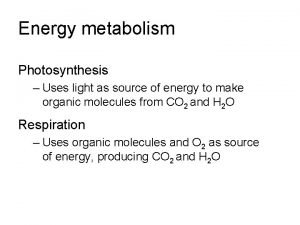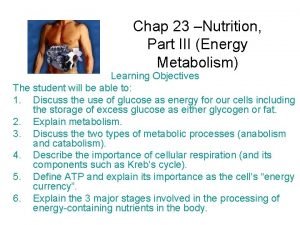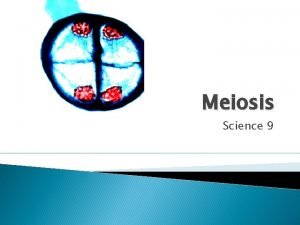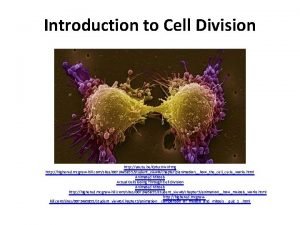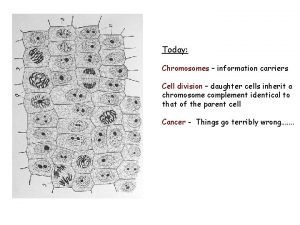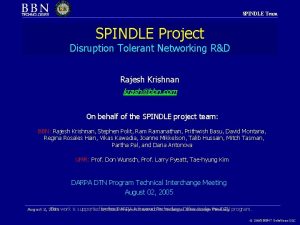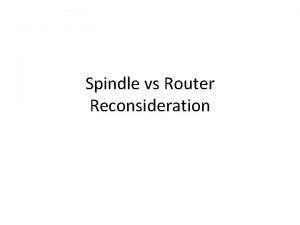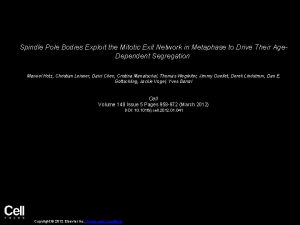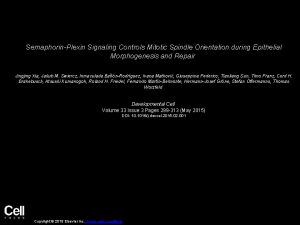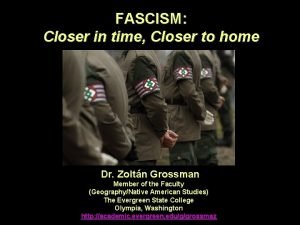The Mitotic Spindle A Closer Look The mitotic











- Slides: 11

The Mitotic Spindle: A Closer Look • The mitotic spindle is a structure made of microtubules that controls chromosome movement during mitosis • In animal cells, assembly of spindle microtubules begins in the centrosome, the microtubule organizing center • The centrosome replicates during interphase, forming two centrosomes that migrate to opposite ends of the cell during prophase and prometaphase

• An aster (a radial array of short microtubules) extends from each centrosome • The spindle includes the centrosomes, the spindle microtubules, and the asters • During prometaphase, some spindle microtubules attach to the kinetochores of chromosomes and begin to move the chromosomes • Kinetochores are protein complexes associated with centromeres • At metaphase, the chromosomes are all lined up at the metaphase plate, a plane midway between the spindle’s two poles

• In anaphase the cohesins are cleaved by an enzyme called separase • Sister chromatids separate and move along the kinetochore microtubules toward opposite ends of the cell • The microtubules shorten by depolymerizing at their kinetochore ends

Figure 12. 9 a Experiment Kinetochore Spindle pole Mark

Figure 12. 9 b Results Conclusion Chromosome movement Motor protein Chromosome Microtubule Kinetochore Tubulin subunits

• Nonkinetochore microtubules from opposite poles overlap and push against each other, elongating the cell • In telophase, genetically identical daughter nuclei form at opposite ends of the cell • Cytokinesis begins during anaphase or telophase and the spindle eventually disassembles

Cytokinesis: A Closer Look • In animal cells, cytokinesis occurs by a process known as cleavage, forming a cleavage furrow • In plant cells, a cell plate forms during cytokinesis

Binary Fission in Bacteria • Prokaryotes (bacteria and archaea) reproduce by a type of cell division called binary fission • In binary fission, the chromosome replicates (beginning at the origin of replication), and the two daughter chromosomes actively move apart • The plasma membrane pinches inward, dividing the cell into two

Figure 12. 12 -4 Origin of replication E. coli cell 1 Chromosome replication begins. 2 One copy of the origin is now at each end of the cell. 3 Replication finishes. 4 Two daughter cells result. Two copies of origin Origin Cell wall Plasma membrane Bacterial chromosome Origin

The Evolution of Mitosis • Since prokaryotes evolved before eukaryotes, mitosis probably evolved from binary fission • Certain protists exhibit types of cell division that seem intermediate between binary fission and mitosis

Figure 12. 13 Kinetochore microtubule Bacterial chromosome Intact nuclear envelope (c) Diatoms and some yeasts (a) Bacteria Chromosomes Kinetochore microtubule Microtubules Intact nuclear envelope (b) Dinoflagellates (d) Most eukaryotes Fragments of nuclear envelope

